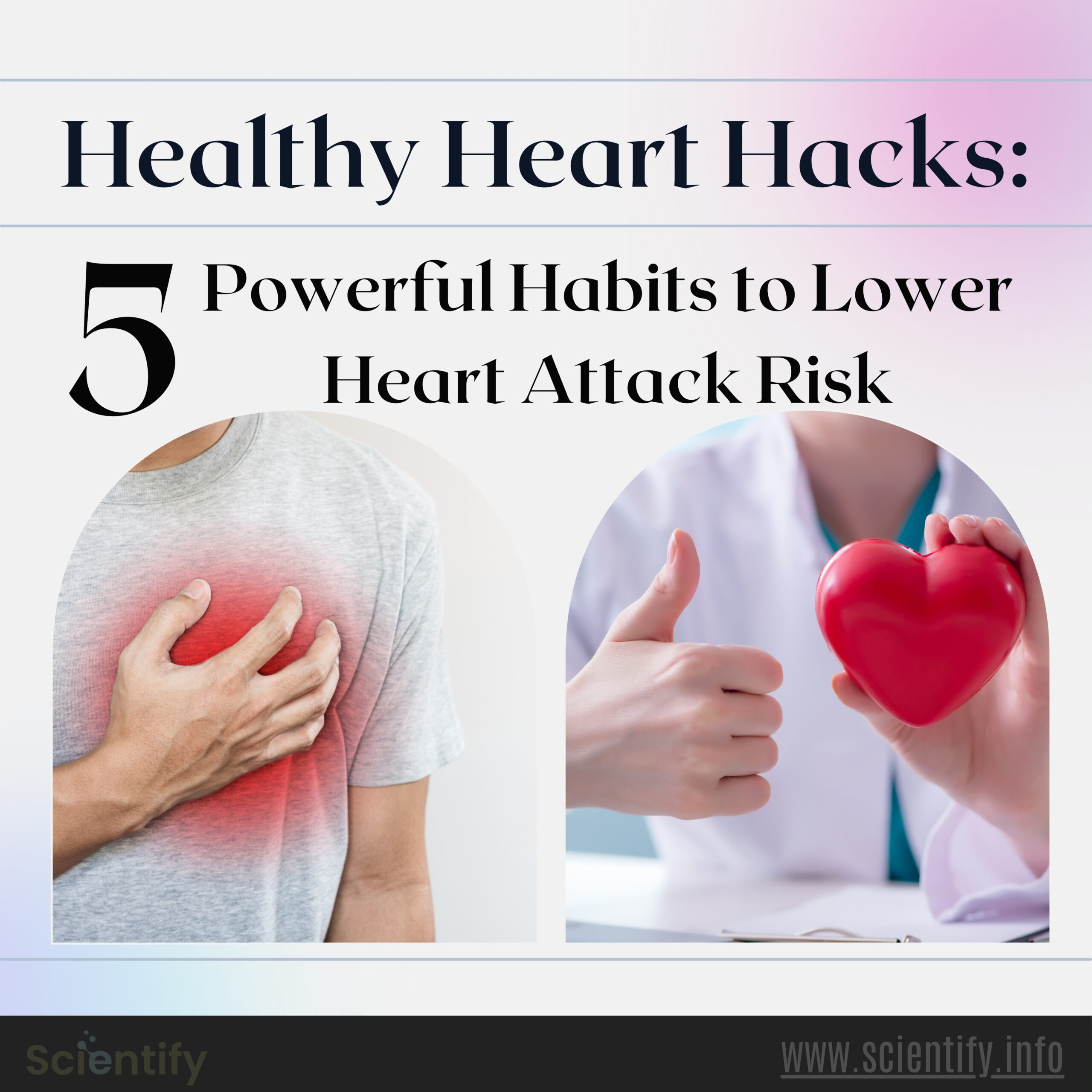Are you looking for ways to lower heart attack risk? Heart attacks are often sudden, but the risk builds up quietly over time through daily habits, stress, poor nutrition, and inactivity. Cardiovascular disease remains the leading cause of death worldwide, yet it’s also one of the most preventable. By embracing a few key lifestyle changes, you can significantly reduce your chances of facing a heart attack. Let’s explore five powerful habits that not only protect your heart but also enhance your overall well-being.
1. Move Your Body Every Day

Physical activity is more than just a way to stay in shape—it’s a direct investment in your heart’s health. When you engage in regular movement, your heart becomes stronger, your blood circulation improves, and your body becomes more efficient at using oxygen. Exercise also helps regulate blood pressure and reduces the levels of LDL (bad cholesterol) while increasing HDL (good cholesterol), both crucial for heart health.
You don’t need to be a fitness enthusiast or hit the gym every day to benefit. Even 30 minutes of brisk walking, cycling, swimming, or dancing can make a remarkable difference. The goal is consistency, not intensity. The more you move, the more you strengthen your cardiovascular system and lower heart attack risk . For those with busy schedules, incorporating movement into your daily routine—like walking instead of driving short distances, taking stairs instead of elevators, or doing light stretches at home can be effective in the long run to lower heart attack risk.
2. Eat Smart and Nourish Your Heart

Your diet is one of the most influential factors in determining your heart health. A nutrient-rich, balanced diet not only supports your heart but also helps control your weight, manage cholesterol levels, and stabilize blood pressure. Processed foods, sugary snacks, and foods high in saturated fats put extra strain on your heart and arteries, increasing the likelihood of blockage and inflammation.
Instead, prioritize natural, wholesome foods. Incorporating more fruits and vegetables into your meals ensures you’re getting the fiber, vitamins, and antioxidants your heart needs to stay healthy. Whole grains like oats, brown rice, and quinoa provide long-lasting energy and help regulate blood sugar. Healthy fats found in nuts, seeds, olive oil, and fish such as salmon or mackerel support heart function and reduce inflammation. Reducing your salt intake and staying hydrated also play vital roles in maintaining blood pressure, circulation, and lower heart attack risk.
3. Learn to Manage Stress Effectively to Lower Heart Attack Risk

Stress is a silent contributor to heart disease. It affects your body in multiple ways—raising blood pressure, increasing inflammation, and often leading to unhealthy coping mechanisms like overeating, smoking, or alcohol consumption. Over time, chronic stress wears down the circulatory system, making you more vulnerable to heart attacks.
Managing stress isn’t about eliminating it, but learning how to respond to it in healthy ways. Daily relaxation techniques such as deep breathing exercises, meditation, or yoga can calm the nervous system and reduce stress hormone levels. Engaging in hobbies, connecting with loved ones, or even spending quiet time alone in nature can significantly improve your emotional health. When you take care of your mind, your heart benefits too, and you lower the
4. Make Sleep a Priority, Not a Luxury

Sleep is often overlooked, but it plays a critical role in cardiovascular health. During deep sleep, the heart rate slows, blood pressure drops, and the body undergoes essential repair and regulation processes. Lack of quality sleep has been linked to increased blood pressure, obesity, and insulin resistance, all of which are major risk factors for heart disease. Find out amazing facts about the human heart.
Adults should aim for at least seven to nine hours of uninterrupted sleep each night. Establishing a consistent sleep routine, going to bed and waking up at the same time every day, can help reset your internal clock. Creating a sleep-friendly environment by reducing noise, dimming lights, and avoiding screens before bed can improve your sleep quality. If you frequently struggle with sleep, it may be wise to consult a healthcare provider to rule out conditions like sleep apnea, which has strong links to heart problems.
5. Monitor Your Health Regularly

You can’t manage what you don’t measure. Many people live with high blood pressure, elevated cholesterol, or early signs of diabetes without knowing it, until it’s too late. Regular health check-ups are essential for detecting problems early and keeping your heart in good condition.
Checking your blood pressure, cholesterol levels, blood sugar, and weight on a routine basis can help you and your doctor understand your risk profile. If you notice changes or warning signs, you can act quickly through medication, lifestyle changes, or further testing. Prevention is always more effective and less costly than treatment after a heart attack. Being proactive and knowing the habits to lower heart attack risk empowers you to take control of your future.
Final Thoughts
Your heart is one of the most vital organs in your body, working nonstop to keep you alive. The choices you make today can have a lasting impact on how well your heart functions tomorrow. By adopting these five simple but powerful habits, staying active, eating wisely, managing stress, sleeping well, and monitoring your health, you lay a strong foundation for a healthier life. A strong heart doesn’t happen accidentally; it’s built through daily care and conscious living.
Start small, be consistent, and remember: taking care of your heart is one of the most loving things you can do for yourself.













